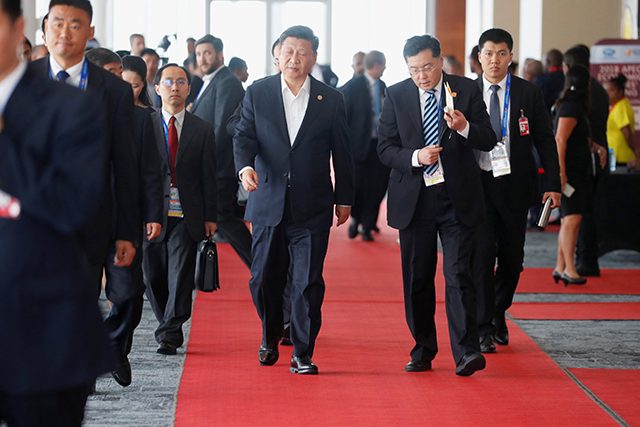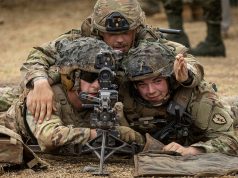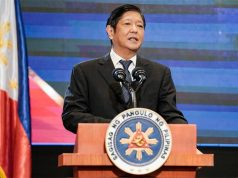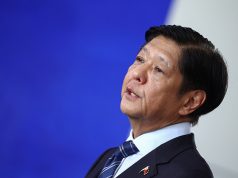
Filipinos still hold a negative impression on China, a recent Social Weather Stations survey revealed, despite the improved relations between the two countries.
Results of the survey were released a day before President Xi Jinping made his first state visit to the Philippines in 13 years.
China ranked “poor” or a -16 score among the countries tested for public trust in the SWS survey for the third quarter of 2018.
This was slightly higher than the -35 score recorded last June from the previous quarter.
Other countries included in the questionnaire were the United States, which ranked “very good,” and Japan, Malaysia and Israel, which Filipinos “moderately trust.”
The survey was conducted from September 15 to 23 through face to face interviews among 1,500 adults or those aged 18 years old and above.
Questions, which were expressed in Filipino and English, included specific issues on the West Philippine Sea row such as the growing Chinese military bases and China’s reported abuses on Filipino fishermen.
Results further showed a higher awareness among Filipinos of these incidents before participating in the survey as compared to the last quarter, that is, from 81 to 89 percent.
The ones with extensive knowledge also stepped up from 12 percent to 15 percent.
The distrust on China is particularly higher among those who are aware of these incidents before the interview.
Overall, 84 percent of the respondents said that it is “not right” for the government to “leave China along with its infrastructures and military presence in the claimed territories.”
Moreover, 86 percent of them perceived it important to strengthen the country’s military capability, especially the Philippine Navy.
The Filipinos’ dissent to China is also reflected on social media.
Tomorrow, November 20, Chinese President Xi Jinping will be in the Philippines. He’ll be here for a ‘provincial visit.’ pic.twitter.com/VaJrg8gwFc
— The Professional Heckler (@hecklerforever8) November 19, 2018
Tomorrow, Chinese President Xi Jin Ping will be arriving in Manila to hold negotiations w/ Duterte administration regarding joint explorations in the West Philippine Sea and Build, Build, Build projects.
Oppose the attacks on PH sovereignty! #HandsOffPH #ChinaLayas pic.twitter.com/Gf8gyGq2rK
— League of Filipino Students (@LFSPhilippines) November 19, 2018
China’s first diplomatic visit was last April 2005 when former Chinese President Hu Jintao met with then-president Gloria Macapagal-Arroyo.
Xi Jinping’s visit to Manila
Xi’s arrival to the country was initially announced last August. Duterte invited his Chinese counterpart to Manila when he went to Beijing last October 2016.
Xi’s trip here was for two days from November 20 to 21. It was reported that he’ll stay at the Shangri-La hotel in Bonifacio Global City in Taguig city.
When he arrives, Xi is expected attend a wreath-laying ceremony at Rizal Park in Manila.
Several schools in the vicinity have also announced class suspensions as many roads will be closed on the day of his arrival.
Zhao Jianhua, Chinese ambassador to the Philippines, said in an interview that the two-day visit marks a “milestone” in the relationship between the two nations.
Philippine-Chinese relations
China and the Philippines have a strong diplomatic relationship for many years before the start of the maritime conflict.
This was first established on June 9, 1975. Since then, the two nations have nearly 100 bilateral agreements covering various sectors, which include infrastructure development, cooperation in combating transnational crimes and trade and investments.
China began claiming maritime features within the Philippines’s 200-nautical mile exclusive economic zone in the West Philippine Sea in 1988.
In 2016, the Permanent Court of Arbitration ruled in favor of the Philippines and dismissed China’s 9-dash-line claim that covers nearly the entire South China Sea.
Two years later, in Duterte’s presidency, a warmer stance was taken towards the dispute as he courted the Asian superpower for financial loans.









